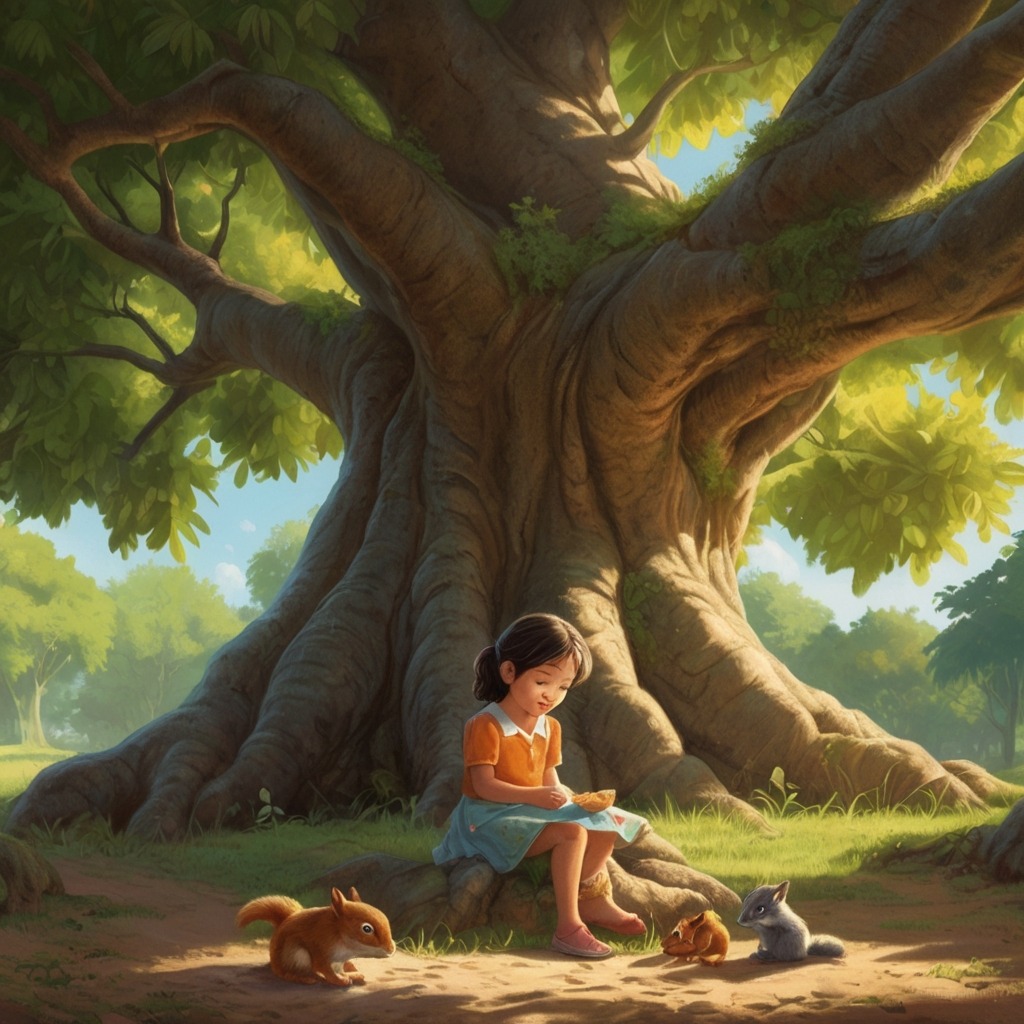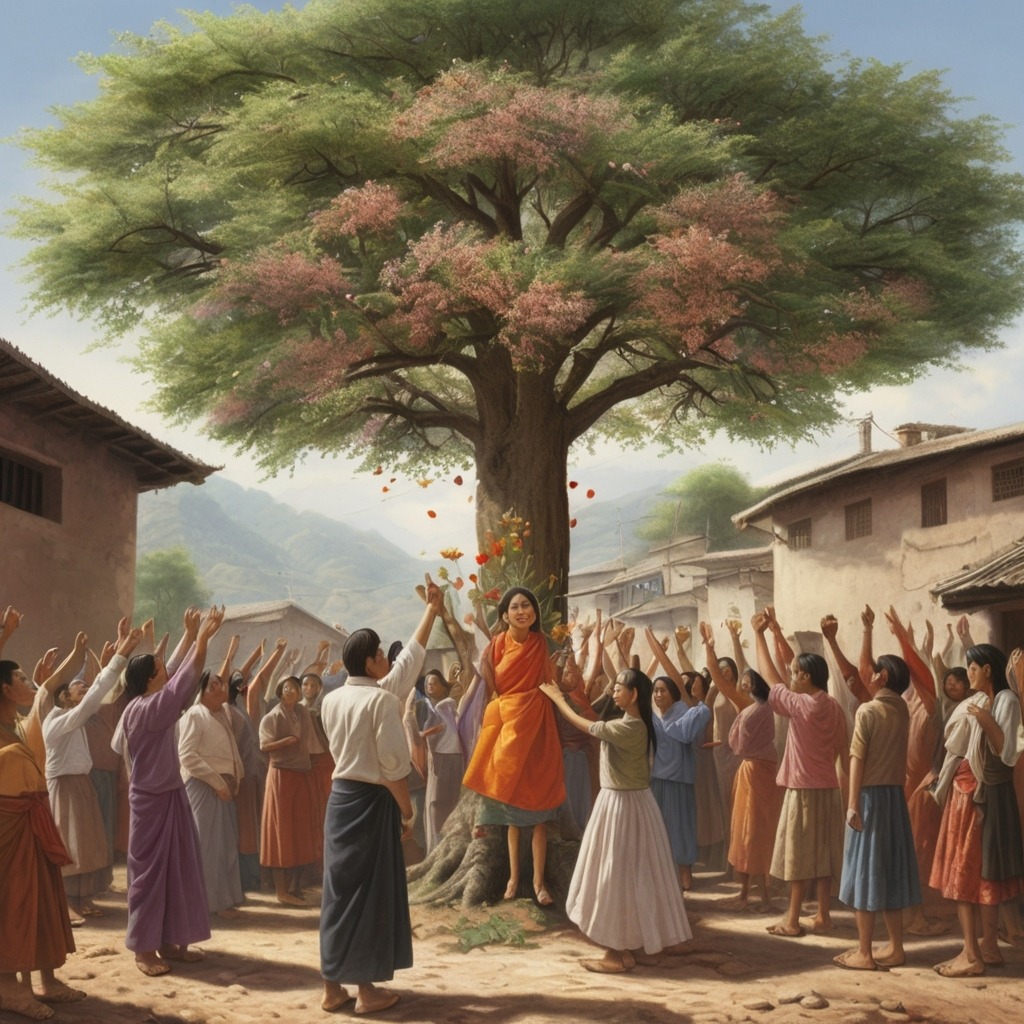In a peaceful village, a little girl discovers a magical mango tree that teaches her the secrets of kindness and nature.
Introduction:
Village stories capture the charm of simple living, close-knit communities, and nature’s quiet wonders. Tara and the Talking Mango Tree is a magical tale about friendship, listening to nature, and how kindness can grow just like a tree. Ideal for ages 5–10, this story is perfect for classroom reading, storytelling time, or bedtime snuggles.
Full Story:
In the lush green village of Bhilora, where cows strolled slowly and the river hummed lullabies, lived a curious little girl named Tara. She had short braids, sparkly eyes, and bare feet that loved the warm village dust.
Every day after school, Tara visited her favorite spot—a giant old mango tree at the edge of the fields.
The villagers called it “Vriksh Dada,” meaning Grandpa Tree.
“Be kind to the tree,” her grandmother always said, “it watches and remembers.”
Tara would sit beneath its shade, eat jaggery, and draw pictures in the soil.

But one summer afternoon, something strange happened.
The First Words
Tara was humming and feeding squirrels when the mango tree rustled without wind.
Then, a deep, slow voice said,
“Little one, thank you for being kind.”
Tara’s eyes widened. “W-who said that?”
“I did,” rumbled the tree. “I am Vriksh Dada. You’re the only one who listens.”
Tara jumped up. “You’re… a talking tree?”
“Only to those who respect the earth,” said the tree with a smile in its bark.

From that day, Tara and the tree spoke daily. She told it stories about school, her pet goat Meenu, and her dreams of planting a forest.
In return, the tree shared old village tales, how roots whisper underground, and why fireflies blink in rhythm.
The Village Drought
One summer, no rains came. The fields dried. The river thinned. The villagers grew worried.
“We must cut trees for wood,” said some elders. “We need fire and shelter.”
Tara ran to the mango tree, tears in her eyes.
“They want to cut you, Vriksh Dada.”
The tree rustled sadly. “If I must go, I will. But I have one last lesson.”
That night, Tara stayed under the tree. The wind whispered secrets. The next morning, she ran to the village square.
“I know how to save water!” she cried.
Tara’s Big Plan
Tara gathered the children.
They dug small trenches to capture rainwater. They made clay pots to store water underground. They even wrote a song about saving every drop!
The elders were skeptical—until the next light rain came.

To their surprise, Tara’s trenches held the water like little ponds. Plants grew. Birds returned. And most of all, Vriksh Dada survived.
The villagers cheered. “Let’s not cut trees. Let’s grow more!”
They named Tara the “Green Hero of Bhilora.”
And every summer after that, they sang her water song during the rains.
Moral:
Respecting nature and using our knowledge with kindness can change the world—even for a small village.
Conclusion:
Tara and the Talking Mango Tree reminds children of the beauty in listening—to nature, to elders, and to their hearts. Village life may be simple, but it holds the power to teach profound lessons in love, community, and environmental care. Let kids learn that even a small idea, like saving water, can grow into a forest of change.









